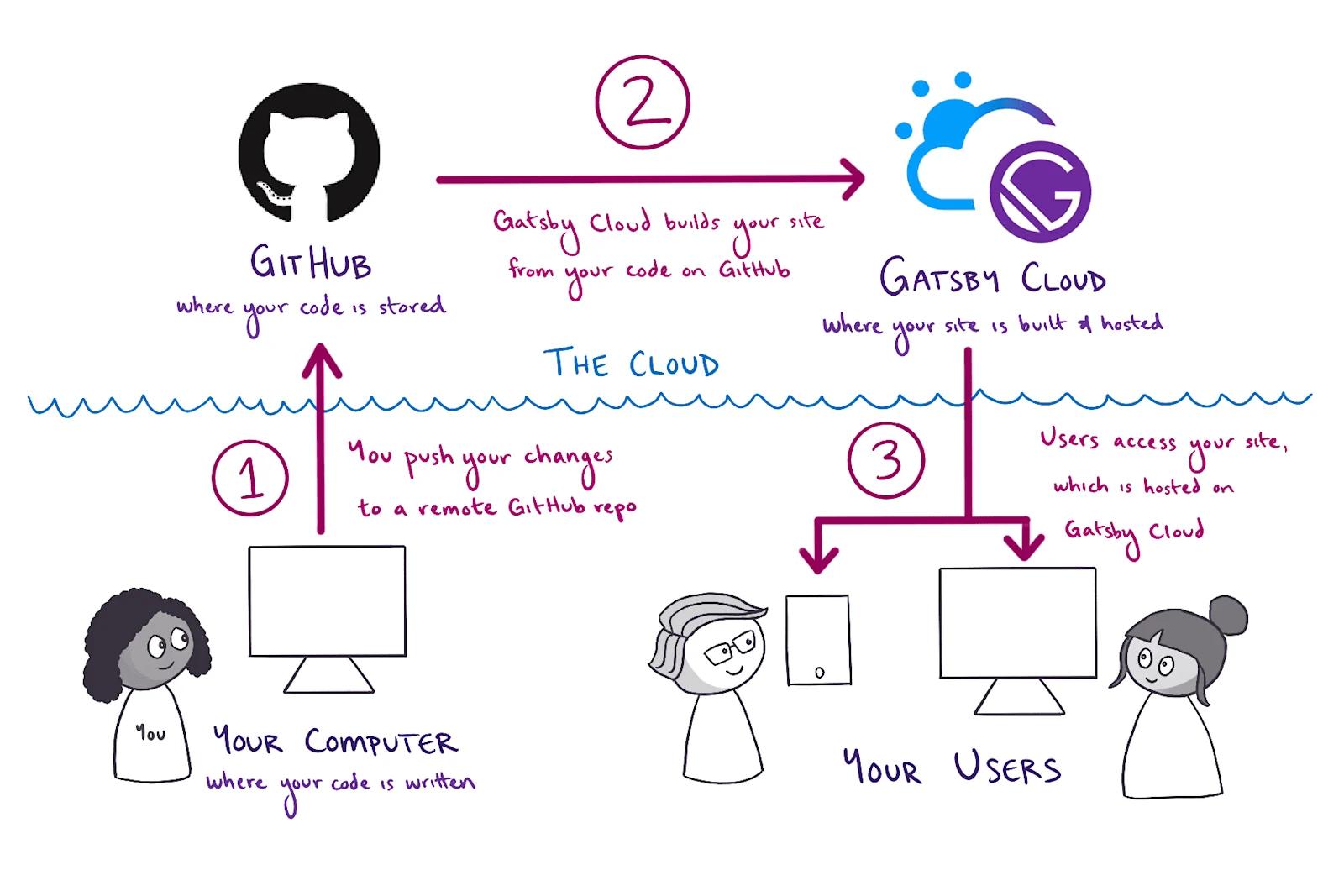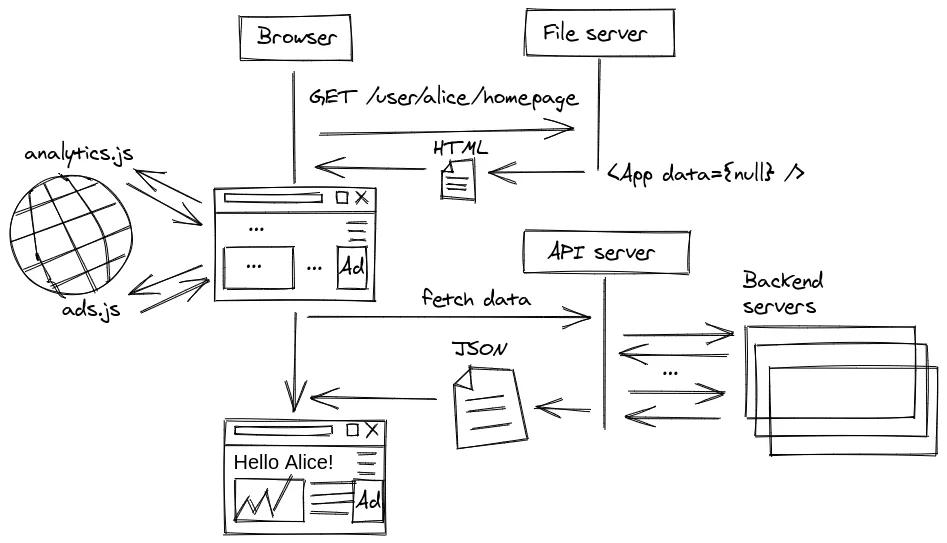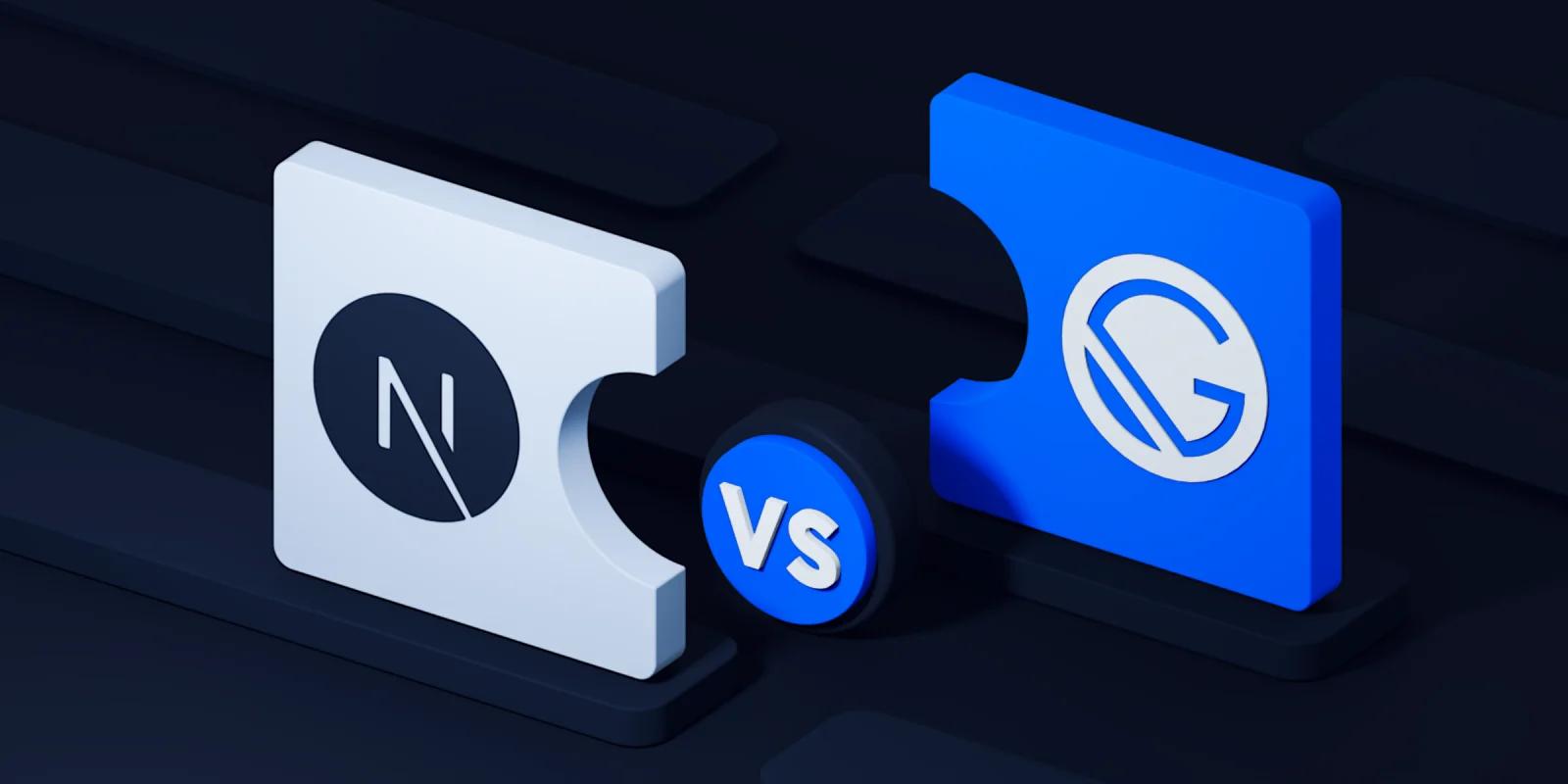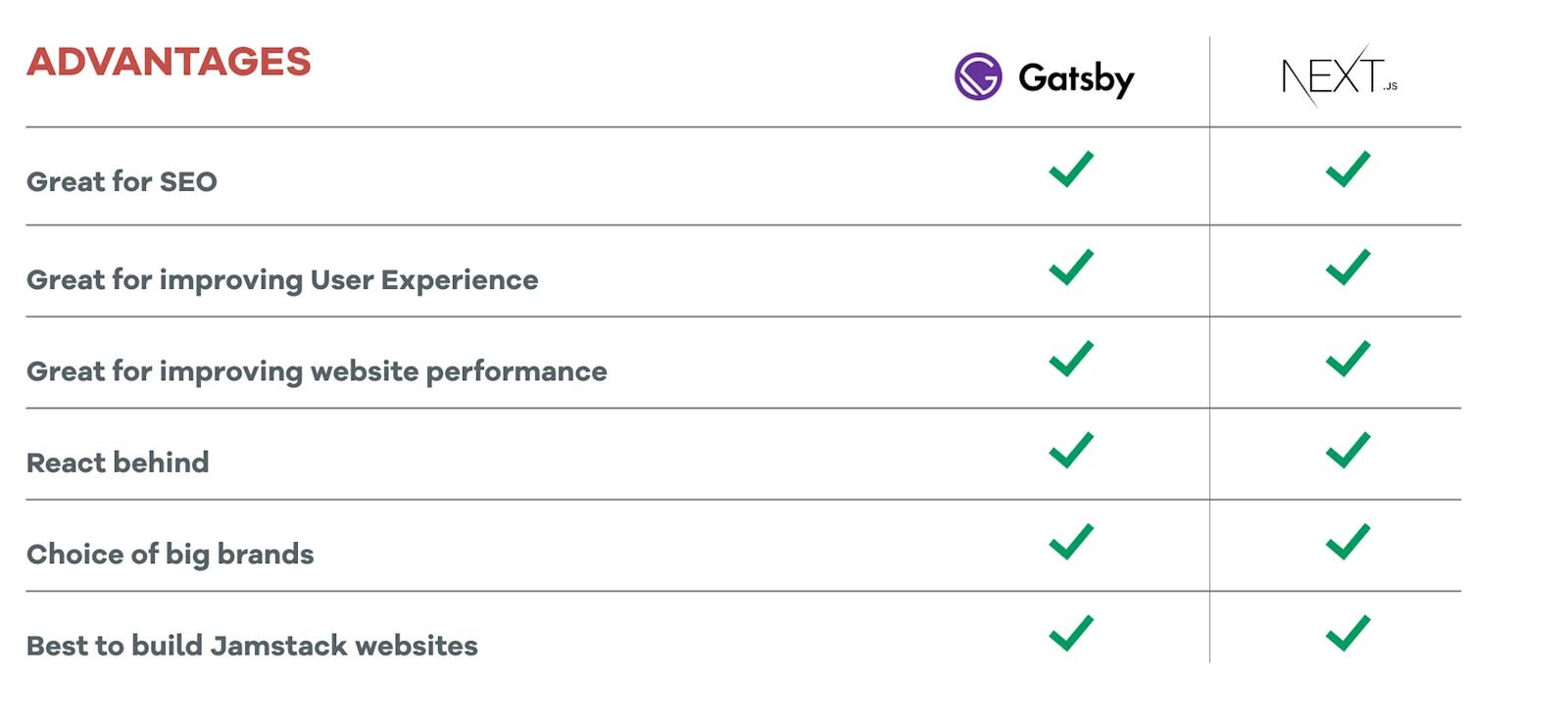Choosing Between Gatsby and Next.js
The Gatsby vs. Next.js debate remains a hot topic going into 2023. In this article, we will analyze the benefits of each framework and present use cases that will help you choose between the two.
What is GatsbyJS?
GatsbyJS is a React-based, GraphQL powered frontend framework that generates static HTML in advance. Gatsby is known for fast page loads through the use of features like static-site generation, asset optimization, data prefetching, and code splitting.
How does Gatsby work?
Gatsby fetches data and content through external APIs and structures the data in a predefined page template for pages to be rendered ahead of time to improve performance and core web vitals.

gatsby-how-does-it-work
When you code and develop your website, Gatsby uses its power to transform it into a static HTML file. This file is then hosted at your chosen provider, providing unbelievable speed and efficiency.
What is Next.js?
Next.js is a javascript framework used to build fast and user-friendly websites with the server-side rendering method. The framework generates HTML dynamically through a server for each new request.
How does Next.js work?
Next.js works by providing an out-of-the-box solution for the server-side rendering of react components. Developers can render javascript code at the server’s end while sending indexable HTML to the user.

next.js-workflow
Next.js uses automatic code-splitting, code reloading, and single file components to help developers build attractive React websites.
The Benefits of Using Gatsby or Next.js

Gatsby vs. Next.js (1)
Gatsby and Next.js are at the forefront of the Jamstack websites. Let’s discuss the benefits of using both from a developer’s point of view.
What Gatsby Excels At
The plugins, starters, and themes available allow developers to build a website in several ways with Gatsby.
The biggest advantage of using Gatsby is the rendering options provided by the framework.
- Static Site Generation (SSG): Gatsby is known for SSG. It consists of pre-rendered HTML, CSS, and javascript pages at build time. SSG is best for runtime scalability and excellent user experience.
- Deferred Static Generation (DSG): With Deferred Static Generation, developers can choose which pages will be built when a user requests them. Unlike SSG, this method requires the server to be running even after the initial build has been deployed.
- Server-Side Rendering (SSR): Server-Side-Rendering renders pages to the client only at runtime, indicating that the build process happens only when the page is requested. Website visitors will see the updated version of the content they request.
Gatsby offers built-in themes, plugins, and starters, which help to set up a fully functioning website in minutes.
To get a better understanding of how plugins work, see what the Gatsby plugins for Contentful can do for a website running on both technologies.
What Next.js Excels At
Next.js gives developers the freedom to create applications without worrying about any unnecessary tools, making it a great framework for setting up large-scale applications.
One selling point for using Next.js is its responsiveness and flexibility to adapt to any screen size. It's fully omnichannel, making it possible for users to access it from their favorite devices.
Another selling point is the framework’s smooth development process. Developers get excited when they hear about the reusable component feature Next.js offers. Not only does this reduce redundancy, but it also helps decrease development time.
Next.js also has built-in CSS support and automatic image optimization, allowing developers to render out the website using minimum storage.
Recently, Next.js introduced SSG, adding it to its list of rendering methods. Before that, Next.js was known as the frontend framework best for SSR webpage rendering.
When to Use Gatsby and Next.js

Similarities-between-Nextjs-and-Gatsbyjs.png
The Gatsby vs. Next.js debate will never be settled. That is because brands have different needs. Let's have a closer look at the use cases for both frontend frameworks.
GatsbyJS: Master of Static Websites
Gatsby is more suitable to build static websites that generate HTML beforehand and the page template gets distracted on CDNs for fast recovery and performance.
A static website is a kind of webpage that is delivered to the user’s browser without any alteration. It consists of a series of HTML files, and all these files represent the individual web pages of the website.
Typically, static websites have a frontend framework and a headless solution to power the website. Gatsby can be deployed by developers working on headless CMS as they have full control over the frontend development.
Since a headless CMS is frontend agonistic, the developers can make use of Gatsby to build the presentation layer of the website from scratch with available plugins and starters.
In this case, developers are better off choosing Gatsby over Next.js as it gives developers working with the CMS freedom to choose from the static design patterns they like and leave the functionality to be handled by headless CMS ecosystems.
If you'd like to learn more about the headless CMS migration process before choosing Gatsby, download our free implementation and guide on a successful headless migration.
Next.js: Build Large, Multi-User Websites
Next.js is commonly used for building websites that require hot reloading and server-side interaction.
If you are a developer working on a website that gets accessed by multiple users, Next.js would be an ideal choice for you.
As these websites are being requested by multiple users at the same time, it becomes impossible to scale static websites during runtime. Every time a user pings the website, the build time taken by the server makes Gatsby a bad choice to be used in this scenario.
With these types of websites, dynamic allocation and rendering are required for users to access different functionalities at the same time. This is where Next.js comes in. With server-side rendering, Next.js caters to different users that have logged into the website.
Although Next.js is primarily for developing dynamic websites that cater to multiple users at a time, the framework can still generate static websites. For that, developers need Node installed with npm and need a terminal available to run the static build commands.
The Verdict
Both Gatsby and Next.js are extremely useful for developing impressive websites. Before choosing a framework, stakeholders and developers must know the project requirements to suggest the best framework for the greatest return on investment. We hope this article helps you weigh the options when building a new static website.




